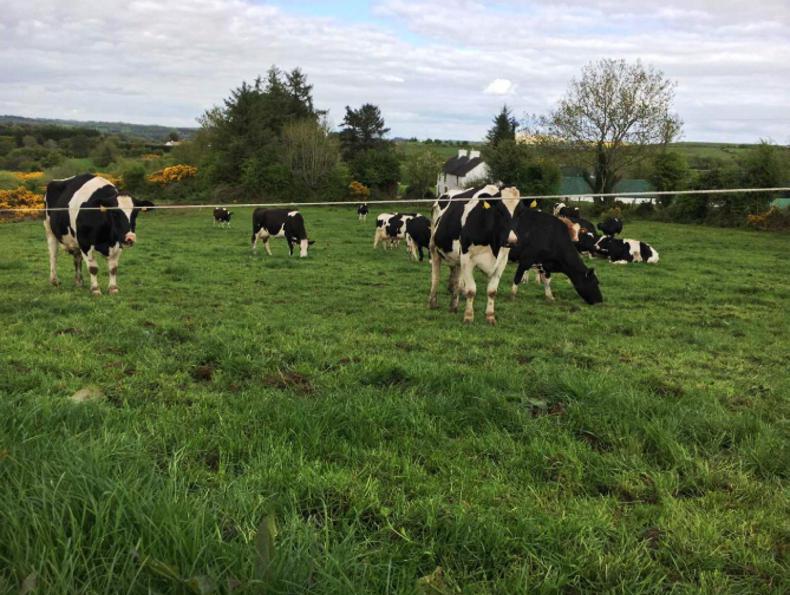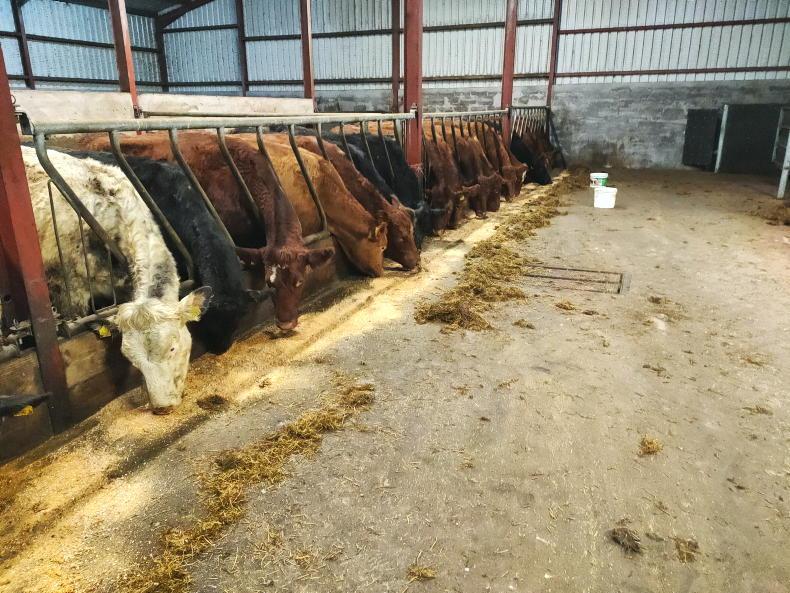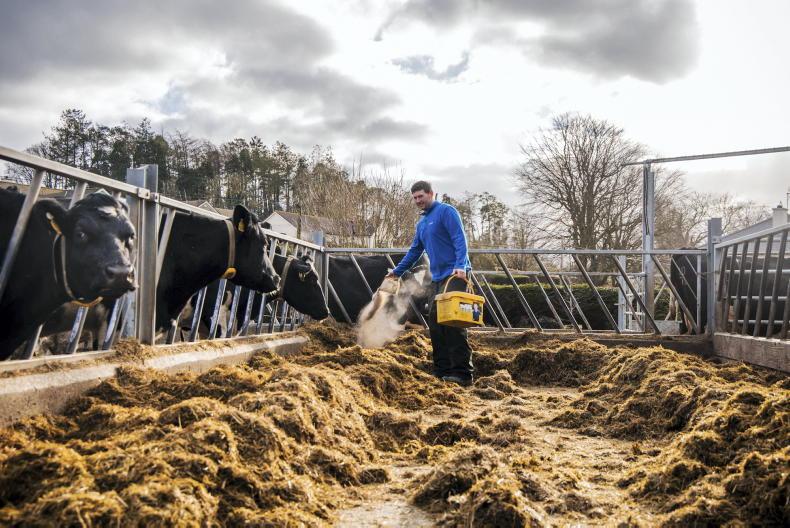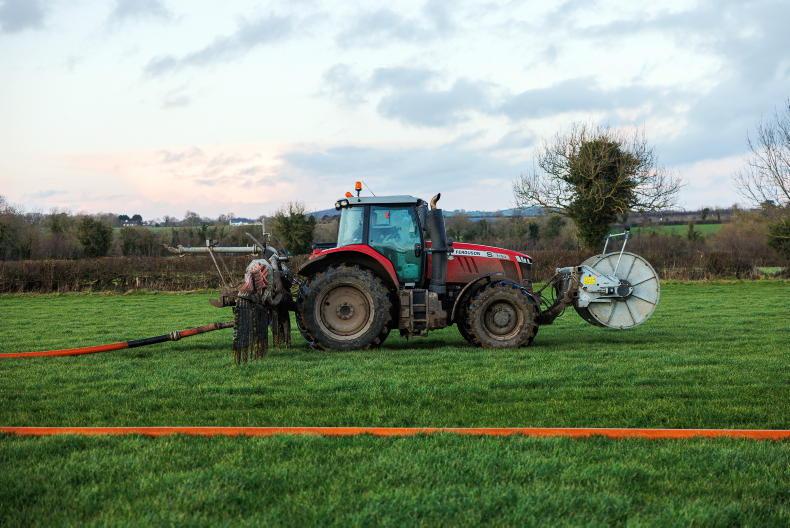I don’t mind whatsoever if it’s another 40 years before I see weather like we have had during the Beast from the East and Storm Emma.
I have never worked so hard on the farm, just to maintain the status quo, when spring should have been a time to push on with other, extra jobs such as disbudding calves, vaccinating livestock and applying early nitrogen to grassland.
Thankfully, the weather is beginning to pick up, but an example of the testing conditions that still prevail on these heavy soils in north Longford is that half of the fertiliser which was applied to the silage ground was applied with the Massey Ferguson 135 with an appropriate smaller fertiliser spreader borrowed from a neighbour, as the John Deere remained in the yard … and this was at the beginning of May. And, yes, it still tracked these fields. Some areas of silage ground were unable to receive a single granule of fertiliser whatsoever.
Stock bull
A new Simmental bull was purchased a month ago, and is currently cleaning up the remainder of the suckler cows and will shortly go to work cleaning up after the dairy cows have completed their six-week AI programme. The bull was purchased at the Tullamore Simmental sale and the details were covered in the pedigree section of the Irish Farmers Journal in the edition dated Saturday 21 April 2018. Details can also be viewed on https://webapp.icbf.com/v2/app/bull-search/view/1464567624

GLAS
Oats and mustard have been purchased for the GLAS wild bird cover with the anticipation of getting it sown by the deadline of 31 May. An extension to this deadline would be welcome but we can only go by what is in front of us. The extension to grazing the GLAS traditional hay meadow until 1 May for 2018 was very welcome this year as grazing was very limited on these parcels until the last few weeks in April.
Fertiliser
While this spring has been a testing time for farmers across all sectors, it is important to remain positive for the remainder of the year and for the coming years. Yes, we can aim to err on the side of caution and attempt to conserve more forage as a safety net, but this should not be at the expense of maximising stocking rates, instead looking at soil fertility, reseeding underperforming paddocks and applying early nitrogen.
I would also encourage farmers to maintain a positive outlook in terms of their own mental health and to actively continue to attend discussion group meetings and farm events in their locality as often they form the catalyst to talk about situations on farm and to empathise with each other.
Read more
Farmer writes: scanning cows and making silage
Read more from James Mimnagh here.
I don’t mind whatsoever if it’s another 40 years before I see weather like we have had during the Beast from the East and Storm Emma.
I have never worked so hard on the farm, just to maintain the status quo, when spring should have been a time to push on with other, extra jobs such as disbudding calves, vaccinating livestock and applying early nitrogen to grassland.
Thankfully, the weather is beginning to pick up, but an example of the testing conditions that still prevail on these heavy soils in north Longford is that half of the fertiliser which was applied to the silage ground was applied with the Massey Ferguson 135 with an appropriate smaller fertiliser spreader borrowed from a neighbour, as the John Deere remained in the yard … and this was at the beginning of May. And, yes, it still tracked these fields. Some areas of silage ground were unable to receive a single granule of fertiliser whatsoever.
Stock bull
A new Simmental bull was purchased a month ago, and is currently cleaning up the remainder of the suckler cows and will shortly go to work cleaning up after the dairy cows have completed their six-week AI programme. The bull was purchased at the Tullamore Simmental sale and the details were covered in the pedigree section of the Irish Farmers Journal in the edition dated Saturday 21 April 2018. Details can also be viewed on https://webapp.icbf.com/v2/app/bull-search/view/1464567624

GLAS
Oats and mustard have been purchased for the GLAS wild bird cover with the anticipation of getting it sown by the deadline of 31 May. An extension to this deadline would be welcome but we can only go by what is in front of us. The extension to grazing the GLAS traditional hay meadow until 1 May for 2018 was very welcome this year as grazing was very limited on these parcels until the last few weeks in April.
Fertiliser
While this spring has been a testing time for farmers across all sectors, it is important to remain positive for the remainder of the year and for the coming years. Yes, we can aim to err on the side of caution and attempt to conserve more forage as a safety net, but this should not be at the expense of maximising stocking rates, instead looking at soil fertility, reseeding underperforming paddocks and applying early nitrogen.
I would also encourage farmers to maintain a positive outlook in terms of their own mental health and to actively continue to attend discussion group meetings and farm events in their locality as often they form the catalyst to talk about situations on farm and to empathise with each other.
Read more
Farmer writes: scanning cows and making silage
Read more from James Mimnagh here.











SHARING OPTIONS